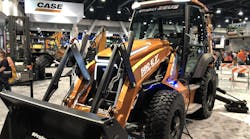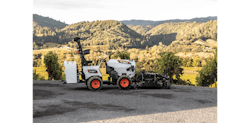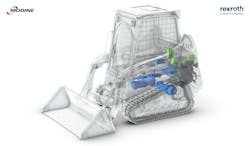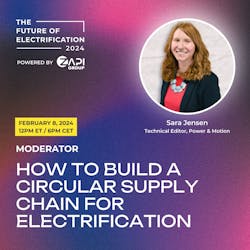Technological Developments are Aiding Electrification of Heavy Vehicles and Equipment
The electrification of heavy-duty trucks and mobile equipment continues to grow. With that comes ongoing technological developments in the fluid power sector as well as increasing use of electric alternatives, benefiting the electric motion control segment.
As the recent CES show demonstrated, technology advancements are ongoing to help improve electrification solutions as well as increase their market adoption. Several OEMs and component suppliers were on hand at the event to demonstrate their latest products.
Doosan Bobcat, for instance, made another big debut at CES 2024 with the unveiling of its autonomous and electric articulating tractor the AT450X. It allows for either autonomous or remote operation for tasks such as mowing, spraying and material transport through the use of artificial intelligence (AI) which helps the machine learn how to maneuver safely through its working environment.
This is yet another in a growing line of electric machines for the company. At CES 2022, the company unveiled what is considered the world's first all-electric compact track loader the T7X, which it developed in collaboration with Moog Construction. During the 2024 event, Bobcat also exhibited its S7X all-electric skid steer loader which it also collaborated on with Moog and originally debuted at CONEXPO-CON/AGG 2023.
Both machines feature full-electric systems which means no hydraulics are used for various work functions; instead, Moog electric actuators and other electronic drive components are used to power the vehicle and its various work functions. Electric actuator technology has evolved to a point where it is becoming feasible to use it in heavier machine applications like the ones developed by Bobcat. Though not able to replace hydraulics in all applications, electric actuators' capabilities are increasing and are expected to continue doing so in the coming years.
Read more about the Bobcat machines and other news from CES 2024.
Advancements in Component and System Designs Key to Ongoing Electrification Success
Developing the proper technology for electric vehicles and machines is integral to ensuring not only their performance but also their ability to achieve the desired goals of electrification — more efficient and emissions-free operation.
Because of this, there have been many developments taking place aimed at improving component and system designs as well as creating newer technology options.
Read more about the Bosch Rexroth eLION portfolio.
There is of course also a lot of work being done in the fluid power space as well to enable the continued use of hydraulics and pneumatics. While electric alternatives are coming into play, there are also many applications in which these technologies are still the best fit. And as Raymond Wang, CEO of HEVI, explained in an interview with Power & Motion, customers have familiarity with fluid power systems and so including them can help market uptake which is why the company continues to use hydraulics for its all-electric machines.
Improved efficiency, more compact systems and new system architectures are just some of the ways those in the fluid power industry are looking to advance their technology to meet the needs of electric vehicles and machines.
To help those who are developing electric vehicles in the heavy-duty vehicle space, ZAPI GROUP is hosting the third edition of its "Future of Electrification" virtual event February 7-8. The event is free to attend and will provide 2-days of presentations and panel discussions on the various aspects related to electrification from new technology developments and design tips to charging infrastructure needs and more.
Yours truly will also be moderating a panel during the event entitled "How to Build a Circular Supply Chain for Electrification" on Feburary 8. During this session, panelists working in the electrification space will provide insights on what defines a circular supply chain, the benefits it provides as well as challenges associated with creating one, and more.
Anyone interested in this or other sessions taking place during the event can learn more and register at futureofelectrification.org.
The transition to electric-powered vehicles is certainly not going anywhere, and from the many developments currently taking place — of which I've only touched on a very small sampling — it appears the ongoing progress and better performing systems will only help to enable even further advancement of these vehicles.





